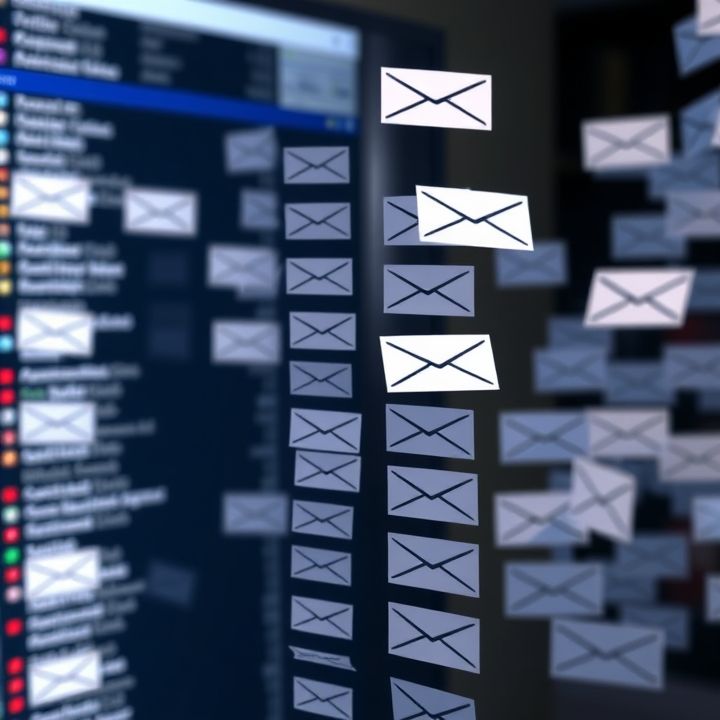Table of Contents
- Introduction
- Understanding the Difference: Triggered vs. Transactional Emails
- Identifying Key Customer Touchpoints for Email Automation
- Crafting Personalized Email Content to Enhance Engagement
- Optimizing Timing and Frequency for Triggered Emails
- Utilizing Customer Feedback and Behavior for Email Campaigns
- Conclusion
- Frequently Asked Questions
Introduction
In the fast-paced digital age, savvy marketers are constantly on the hunt for innovative ways to captivate and engage their audience. Have you ever wondered how some businesses transform casual browsers into loyal customers with seemingly magical precision? The secret lies in the power of triggered emails—a technique that’s revolutionizing the landscape of customer engagement.
Imagine experiencing a significant boost in customer interaction without any additional effort. According to recent statistics, businesses utilizing triggered emails see remarkable improvements in key performance metrics:
| Metric | Percentage Increase |
|---|---|
| Email Open Rates | 70% |
| Click-Through Rates | 152% |
| Customer Retention | 60% |
The potential is exhilarating, but how do you tap into this email marketing goldmine? Our article will reveal exactly how triggered emails can reshape your customer engagement strategy, turning curiosity into commitment and interest into investment.
Understanding the Difference: Triggered vs. Transactional Emails
Triggered emails and transactional emails are two critical components in the realm of email marketing, each serving unique purposes to enhance customer engagement and retention. Triggered emails are automated messages sent based on specific user behaviors or actions, such as signing up for a newsletter, abandoning a cart, or browsing particular products. These emails are designed to nurture relationships by delivering personalized content that directly addresses the recipient’s interests, effectively driving engagement.
On the other hand, transactional emails are essential communications usually prompted by a customer’s interaction with a business’s service or product. Examples include order confirmation notifications, shipping updates, and password reset instructions. Although transactional emails are primarily informative, they offer opportunities for brands to enhance user experience and foster loyalty by embedding relevant and personalized content.
While both triggered and transactional emails are automated, the distinction lies in their intent and delivery style. Triggered emails are more marketing-focused, aiming to encourage further engagement, whereas transactional emails prioritize delivering critical information about ongoing transactions. When leveraged strategically, both types of emails can play a pivotal role in cultivating a deeper connection with customers and ensuring their continued satisfaction.
Identifying Key Customer Touchpoints for Email Automation
Identifying key customer touchpoints is crucial for effective email automation. These touchpoints represent moments in the customer journey where interaction is not only possible but also impactful in influencing customer behavior. One of the primary touchpoints includes when a customer signs up for a newsletter or creates an account, marking an opportunity to send a welcome email. This type of email sets the tone for future interactions, offering introductions to your brand and any initial offers or tips.
Another essential touchpoint arises when a customer makes a purchase. Post-purchase emails serve to confirm the order, provide additional product information, and suggest complementary products or services. Additionally, asking for feedback or reviews post-purchase can further engage the customer and foster loyalty.
Abandoned cart emails are also critical touchpoints. When a customer adds items to their cart but does not complete the purchase, automated reminders can persuade them to finalize their transaction.
Beyond transactional interactions, periodic engagement emails, such as updates on new product launches or personalized recommendations based on past behavior, keep the connection active and relevant. Identifying and leveraging these touchpoints ensures that your email strategies are timely, personalized, and aligned with customer needs.
Crafting Personalized Email Content to Enhance Engagement
Crafting personalized email content is a powerful strategy for enhancing customer engagement and driving retention. By leveraging data-driven insights, businesses can tailor their messages to reflect the individual preferences and behaviors of their customers. Personalized emails go beyond addressing recipients by their first name; they offer customized recommendations based on past purchases, browsing history, or demographic information, making the content highly relevant and engaging.
In addition, segmentation plays a vital role in personalization. By dividing your audience into specific groups based on characteristics like purchase behavior, geographical location, or engagement level, you can create content that resonates with each group differently. This targeted approach not only boosts open and click-through rates but also fosters a deeper connection between the brand and its customers.
Moreover, timing is crucial in sending personalized emails. Triggered emails, such as welcome series, abandoned cart reminders, or post-purchase follow-ups, ensure that the content reaches customers at moments of high relevance, influencing their decision-making processes.
Overall, when executed effectively, personalized email content transforms transactional exchanges into conversations, builds trust, and ultimately enhances customer loyalty and lifetime value.
Optimizing Timing and Frequency for Triggered Emails
Optimizing the timing and frequency of triggered emails is crucial for maximizing customer engagement and retention. Triggered emails, which are automatically sent based on user behaviors or specific actions, are most effective when they hit the recipient’s inbox at just the right moment. To achieve this, businesses need to closely monitor customer interactions and use data analytics to determine the optimal time to send these emails. For instance, an abandoned cart email should be sent shortly after the cart is abandoned to remind the customer to complete their purchase.
Another key aspect to consider is frequency. While too few emails may lead to missed opportunities, too many can overwhelm and annoy customers, leading to higher unsubscribe rates. Businesses should aim to strike a balance by segmenting their audience and tailoring the frequency of emails based on different customer segments and their specific behaviors. A/B testing can also provide valuable insights into how timing and frequency impact engagement rates. By carefully optimizing these aspects, businesses can ensure that triggered emails remain a powerful tool for enhancing customer engagement, fostering loyalty, and driving long-term retention.
Utilizing Customer Feedback and Behavior for Email Campaigns
Utilizing customer feedback and behavior effectively can significantly enhance the impact of your email campaigns. By analyzing the insights gained from customer feedback, businesses can tailor their email campaigns to address specific needs and preferences, thus driving greater engagement. For example, if multiple customers express difficulties in using a product feature, a targeted email can provide helpful tips or tutorials.
Additionally, monitoring customer behavior, such as browsing history or purchase patterns, allows for the personalization of email content. This might involve sending product recommendations based on past purchases or offering discounts on items frequently viewed by the customer. Personalized emails not only increase the likelihood of conversion but also foster a sense of connection and understanding between the brand and the customer.
Incorporating feedback and behavioral data into your email strategy can also aid in segmenting your audience effectively, ensuring that each customer receives information that is most relevant to them. This degree of personalization is crucial for maintaining customer interest and building long-term loyalty. Ultimately, when customers perceive that a brand truly understands their needs and preferences, they are more likely to engage and remain loyal.
Conclusion
In conclusion, mastering the art of triggered emails can unlock incredible potential for your customer engagement strategies. By understanding the nuances between triggered and transactional emails, you equip your business with powerful tools to nurture and deepen relationships with your consumers. Identifying key touchpoints and personalizing the content of your emails to align with customer preferences significantly enhances the chances of fostering loyalty and increasing lifetime value. Moreover, optimizing the timing and frequency of these communications ensures they are delivered when they are most impactful. Utilizing customer feedback and behavior further refines your email campaigns, making them even more targeted and relevant. By integrating these approaches, businesses can seamlessly transform basic transactional interactions into engaging dialogues, paving the way for stronger connections and sustainable growth. The effective use of triggered emails not only keeps your brand top-of-mind but also creates an ongoing dialogue that nurtures trust and builds a loyal customer base. Embrace the world of triggered emails today and watch as your customer engagement reaches new heights!

